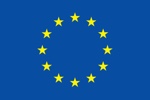This workpackage will develop a sensing system that uses the new lasers developed by MTU, POLIBA and UM in new QEPAS systems realised by UNIBA and a PTS system realised by TU-WIEN. The long wavelength QCLs will be used for BTEX (benzene, toluene, ethylbenzene, xylene) detection at λ = ~13.365 μm, the DFB lasers, hybrid lasers and lasers on silicon for methane detection at λ = ~1.6 μm and 2.3 μm. Depending on the maturity of the technologies, one (or possibly more) device(s) will be chosen for tests at the partner organisations. Laboratory tests will be made for the others.
The work is broadly divided into three tasks: Task 1.1 will develop a compact shoe-box sized QEPAS platform suitable for portable real-world applications such as environmental monitoring; Task 1.2 will focus on BTEX detection using the developed QCLs; while Task 1.3 will target methane leak detection using very compact QEPAS systems for deployment on UAVs (Unmanned Aerial Vehicles, i.e. drones).







